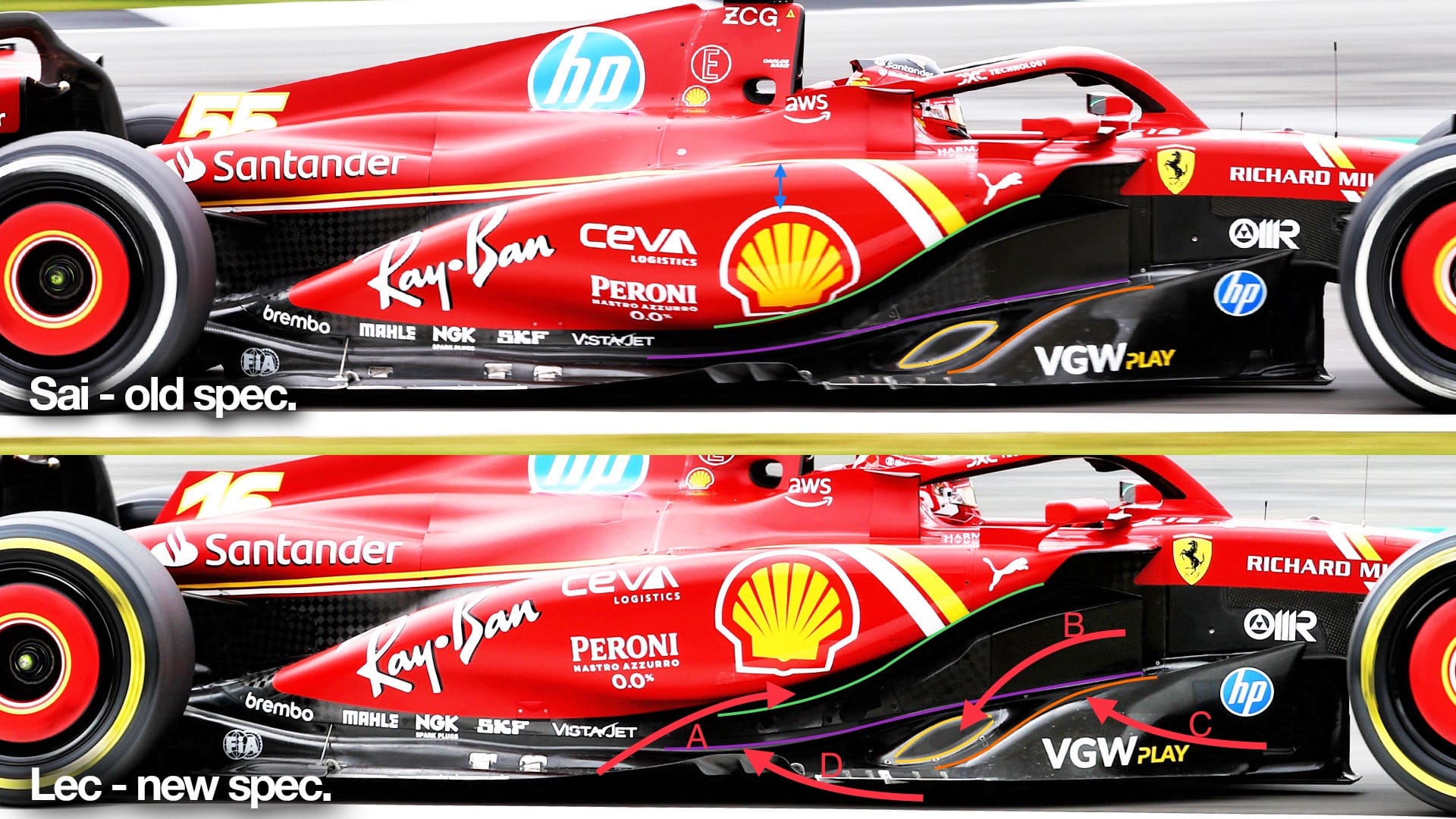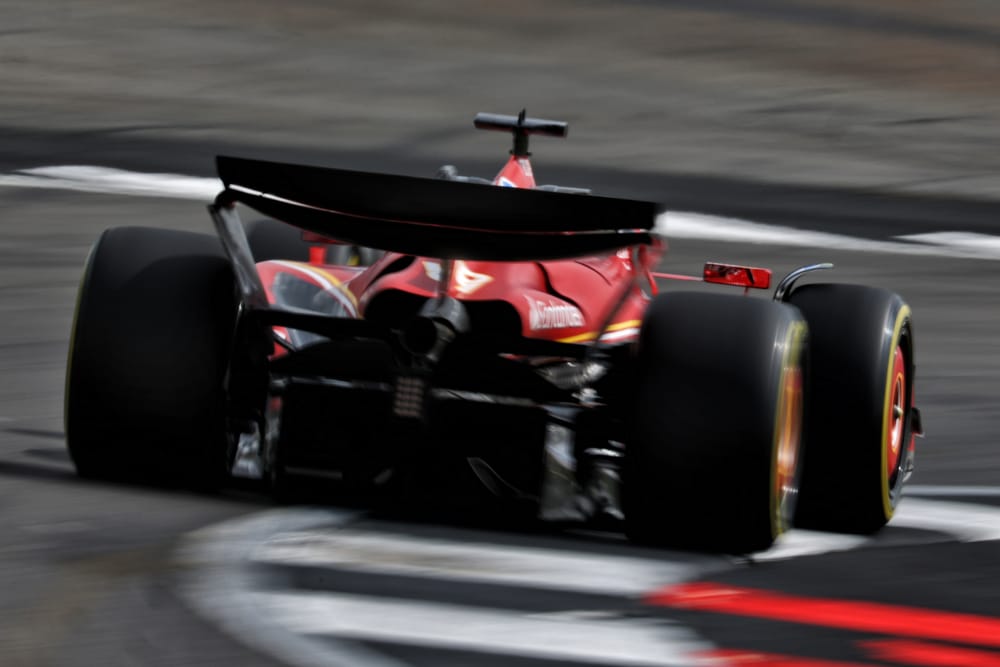Up Next

Ferrari's recent miserable Formula 1 run has included the mid-weekend abandonment of its Spanish Grand Prix upgrade two events later at the British GP.
Was that upgrade the problem? Gary Anderson thinks he can see a hazard it might have created.
Although Ferrari has described its troublesome Barcelona upgrade as “along similar lines” to the one introduced three races earlier at Imola, there are plenty of detail changes that could very easily have contributed to its problems.
On the image below, I have transposed the lines from the ‘old’ bodywork to the ‘new’ bodywork and identified the changes with the lettered red arrows.

A is the underneath of the sidepod being raised up to increase the gap to the upper floor surface. This will reduce the flow velocity through this section of the body profile. It will also move the focus of this flow velocity rearwards reducing its influence on the floor side exit vanes. This height change can also be seen with the positioning of the Shell decal.
B is an increase in the ‘blimp’ required to blend in the outer end of the side impact structure. Again, this points to the floor's upper surface being lowered.
C is the lowered upper floor surface. From this I would detect that the lower surface leading edge has also been lowered, especially outboard.
D is the upper floor surface further rearward of what is called the ‘throat’ of the floor. Again, it looks like it has been lowered slightly in this marked area.
The magenta line shows the inboard intersection of the upper floor surface to the vertical chassis side. There is not too much difference to this other than the area marked with the D arrow.
Looking at the above changes as a whole, reducing the flow velocity through this undercut area will reduce its impact on scavenging the front corner of the floor. It also creates more of a ‘double floor’ concept as opposed to a turning moment on the flow going through this undercut area.
Lowering the leading edge and the throat will increase the underfloor’s potential for flow separation, especially at low ride height.
Personally, I don’t see any positives from this. Yes, Ferrari might just get a little more high-ride-height downforce from the underfloor, but it will very easily lead to load ride height inconsistency.
When you introduce developments and they don’t improve the performance of the car as expected then you need to make sure you learn from it to improve or change your development path for further developments.
Were I at Ferrari, I would look very closely at what the differences are in the ride height aero maps that both specifications generate. From that, I would define a new development route.
If there is not time to exploit that understanding further and manufacture new parts before the next race, I would decide which specification - Imola or Barcelona - to run based on what else I need to understand before committing to new components.
Most of all, Ferrari must remember that while you are going backwards, you’re not going forwards.



